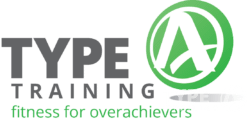Using a Power Plate can boost your workouts, but small mistakes can limit your results or even cause discomfort. The most common errors, or Power Plate Mistakes, come from poor setup, incorrect posture, and using the machine longer or faster than necessary.
By avoiding these common Power Plate Mistakes, you can enhance your workout experience and see better results.
Seniors especially need to pay attention to how you stand, how long you use the machine, and whether the settings match your fitness level. Simple adjustments, like bending your knees slightly or keeping sessions short, make a big difference.
Being aware of Power Plate Mistakes related to posture can significantly improve your workout efficiency.
Popular posts:
Skipping these details often leads to wasted effort or strain. It’s also important to think about how you use the Power Plate for stretching, recovery, or advanced exercises.
More importantly, recognizing your Power Plate Mistakes can help prevent injury.
Being aware of common Power Plate Mistakes is crucial for maximizing your workout effectiveness.
Identifying Power Plate Mistakes early can save you time and effort in your fitness journey.
Using it the wrong way in these areas can slow your progress instead of helping it.
Key Takeaways
- Proper setup and posture prevent common mistakes
- Smart use of time and intensity improves results
- Safety and personalization keep training effective
Avoiding Common Power Plate Mistakes

Many problems with the Power Plate machine come from how you set it up and use it. Placement, instructions, and settings all affect safety and results, so paying attention to these details is essential.
Common Power Plate Mistakes include not adjusting the settings for your specific needs.
Improper Machine Placement
Where you place the Power Plate device directly affects how it works. If the machine sits on an uneven surface, the vibrations may not spread evenly, which can cause discomfort or reduce effectiveness.
A flat, stable floor is the safest option. Keep enough space around the unit so you can move freely.
Crowded areas increase the chance of bumping into walls or furniture while exercising. This is especially important with larger models like the pro5 or pro5 airdaptive, which need more clearance.
Avoid placing the machine on soft flooring like thick carpet. The surface may absorb vibrations and reduce performance.
A solid floor, like wood, tile, or rubber gym flooring, helps maintain stability and ensures consistent vibration output.
Ignoring User Manual Guidelines
Each model, such as the my5, my3, or pro5, comes with a user manual that explains setup, safety, and exercise instructions. Skipping these steps increases the risk of improper use.
Not following guidelines can lead to frequent Power Plate Mistakes that hinder your progress.
The manuals include details on weight limits, frequency ranges, and recommended positions. For example, the Power Plate manuals often warn against using the machine if you have certain medical conditions without first speaking to a doctor.
Ignoring these warnings can lead to injury or strain. The manuals also explain how long you should use the device.
Overuse may cause dizziness, joint pain, or fatigue. Following the manufacturer’s time limits helps you avoid these issues while still gaining the benefits of vibration training.
Incorrect Device Settings
The Power Plate machine allows you to adjust frequency, amplitude, and duration. Using the wrong combination can reduce results or cause discomfort.
Adjusting settings can help prevent Power Plate Mistakes, enhancing your overall workout effectiveness.
Beginners should start with lower settings, often between levels 1 and 2, before moving to higher intensities. If you use straps attached to the machine, the settings matter even more.
For example, standing on the platform with straps usually requires lower vibration levels than standing on the ground with straps. Failing to adjust settings for your fitness level or exercise type can place unnecessary stress on your muscles and joints.
Always match the settings to your ability and goals rather than copying someone else’s routine.
Recognizing and correcting Power Plate Mistakes ensures a safer training environment.
Common Exercise Mistakes
Many common Power Plate Mistakes can be avoided with the right knowledge and training.

Using the Power Plate can improve strength, balance, and mobility, but certain mistakes can reduce its benefits and increase the risk of injury.
Paying attention to form, weight use, vibration settings, and preparation helps you get the most out of your workouts and stay on track with your fitness goals.
Poor Form and Posture
One of the most common mistakes is performing exercises with poor form. The vibrations from the Power Plate amplify even small errors in posture, which can place extra stress on your joints and muscles.
For example, rounding your back during squats or planks can strain your spine. Keeping a neutral spine, shoulders relaxed, and core engaged helps maintain balance and reduces injury risk.
It’s helpful to practice bodyweight exercises off the machine first. Once you can perform them with proper alignment, transition to the Power Plate to add intensity.
Use mirrors or guidance from a trainer to check your form. Correct posture makes your fitness routine more effective and ensures you target the right muscles.
Ensuring proper form can help eliminate Power Plate Mistakes that lead to injury.
Overloading with Weights
Adding weights on the Power Plate can increase strength training, but using too much too soon is a mistake. The vibrations already challenge your muscles, so overloading with heavy weights can lead to poor control and higher injury risk.
Start with lighter weights or no weights at all. Focus on mastering controlled movements before adding resistance.
Understanding how to avoid Power Plate Mistakes will contribute to your overall fitness journey.
Using dumbbells or resistance bands is often enough to complement the vibration effect. Keep the weight moderate so you can maintain balance and posture throughout the exercise.
Remember that the goal is not just lifting heavier but building strength safely while supporting your long-term fitness goals.
Excessive Vibration Levels
The Power Plate allows you to adjust vibration frequency and intensity. Choosing settings that are too high can cause discomfort, dizziness, or muscle fatigue before you finish your workout.
Higher levels aren’t always better. Beginners should start on lower settings and gradually increase as their body adapts.
This approach helps your muscles adjust without overwhelming your system. Use the machine’s manual or preset programs as a guide.
Pay attention to how your body responds, and avoid pushing through discomfort caused by excessive vibration.
Neglecting Warm-Up and Cool-Down
Skipping warm-up and cool-down is another mistake that limits results. The body needs preparation before vibration training to increase circulation and activate muscles.
A short warm-up of dynamic stretches or light movements prepares your joints and muscles for the workout. This reduces stiffness and lowers the chance of injury.
After your session, a cool-down with gentle stretches or light massage on the Power Plate helps relax muscles and improve recovery.
Making warm-up and cool-down part of your fitness routine supports better performance and keeps your workouts safe and effective.
Misuse in Flexibility, Stretching, and Recovery
Addressing Power Plate Mistakes in your routine can lead to better recovery and flexibility.
Using the Power Plate can help improve flexibility, reduce soreness, and support recovery, but mistakes in technique and timing often limit these benefits.
Small errors in stretching form, recovery habits, or massage use can also increase strain instead of easing it.
Incorrect Stretching Techniques
When you use the Power Plate for stretching, poor form can reduce flexibility gains and place extra stress on joints. A common mistake is bouncing or forcing a stretch, which can cause small muscle tears.
Instead, hold each stretch steadily and avoid pushing past your natural range of motion. Another issue is skipping warm-up stretches before vibration training.
Cold muscles are less elastic and more prone to injury. Begin with light dynamic movements, then use the Power Plate to deepen stretches once your muscles are prepared.
Pay attention to alignment as well. For example, rounding your back during hamstring stretches can strain the spine.
Keep your posture neutral and focus on slow, controlled breathing. Proper technique ensures the vibration enhances blood flow and mobility instead of creating tension.
Skipping Recovery Sessions
Moreover, incorporating correct techniques can lessen Power Plate Mistakes that can hinder recovery.
Recovery is as important as active training. If you only use the Power Plate for workouts but skip recovery sessions, your muscles may stay tight and sore longer.
Recovery sessions help reduce stiffness by improving circulation and relaxing muscle fibers. You should schedule short sessions after workouts to support faster recovery.
Even five to ten minutes of gentle vibration can help reduce soreness and improve flexibility for your next session. Neglecting recovery also increases the chance of overuse injuries.
Without enough time for muscles to repair, performance can plateau. Consistency with recovery sessions keeps your training balanced and sustainable.
Improper Use for Massage
Minimizing Power Plate Mistakes can significantly benefit your overall wellness and fitness outcomes.
The Power Plate can be useful for massage, but incorrect use often leads to discomfort instead of relief. Pressing too hard or holding one spot for too long may irritate tissues rather than improve blood flow.
Use light pressure and move the targeted area slowly across the plate. Focus on large muscle groups like the calves, quads, or back, where circulation benefits most.
Avoid using the device on joints or bony areas, since vibration in these spots does not promote recovery and may cause pain.
When used correctly, massage with the Power Plate can loosen tight muscles, increase flexibility, and support overall recovery.
Mistakes in Advanced Training Methods
It’s essential to identify and rectify Power Plate Mistakes in advanced training methods.
When you move into advanced methods on the Power Plate, the risks of poor form and programming increase. Misusing explosive drills or pushing high-intensity intervals without structure can lead to injuries, wasted effort, and slower progress.
Unsafe Plyometric Exercises
Plyometric exercises like squat jumps, box jumps, and lateral hops can be effective when done correctly. On the Power Plate, the vibration adds intensity, which means your joints and muscles absorb greater force.
If you perform these movements with poor landing mechanics, you raise the risk of knee or ankle injury. You should avoid excessive height or speed when doing jumps on the platform.
Focus on soft landings, bent knees, and controlled movement. A common mistake is letting your knees cave inward during landings, which strains the joints.
Another error is doing too many repetitions without rest. Plyometrics are not endurance drills.
Aim for short sets of 5–8 reps with proper recovery between sets. This approach builds power safely without unnecessary stress.
Improper HIIT Integration
High-Intensity Interval Training (HIIT) can support weight loss and improve cardiovascular fitness. On the Power Plate, though, many people make the mistake of ignoring recovery times.
Be mindful that neglecting Power Plate Mistakes can adversely affect your results.
Without rest, your heart rate stays too high, and the quality of each interval drops. Another problem is combining HIIT with heavy strength moves in the same session.
This often leads to fatigue and poor technique. Instead, separate strength and HIIT days or keep sessions shorter to maintain good form.
You should also adjust interval length to your fitness level. Beginners often copy advanced routines with 40–60 second sprints, which is too much.
Start with 20–30 second intervals followed by equal or longer rest. This balance helps you burn calories and build endurance without overtraining.
Neglecting Personalization and Safety Precautions
Proper guidance can help you navigate Power Plate Mistakes that may arise in your training.
Using the Power Plate without proper guidance can increase the chance of strain, discomfort, or injury. Safe and effective use depends on following medical advice and adjusting the equipment to match your body and fitness goals.
Ignoring Medical Advice
Always check with a healthcare provider before you start vibration training, especially if you have heart issues, joint problems, or if you’re pregnant. Skipping this step could put extra stress on your body.
Following medical advice can prevent Power Plate Mistakes that could impact your health.
The user manual lists health warnings and conditions that need medical clearance. If you ignore these instructions, you might face risks that just aren’t worth it.
If your doctor tells you to limit your sessions or avoid certain exercises, stick to those guidelines. Medical advice isn’t just a box to tick—it helps make sure the Power Plate works for you, not against you.
Key reminders:
- Read the health warnings in the manual.
- Get medical clearance if you have existing conditions.
- Follow professional guidance on how long and how hard to train.
Failure to Adjust for Individual Needs
Everyone brings their own fitness goals, strength, and comfort levels to the table. Using someone else’s settings can make your workout less effective or even cause strain.
The Power Plate, including models like my5, lets you adjust vibration frequency, duration, and position. If you don’t personalize these options, you might not get the results you want.
Remember that addressing Power Plate Mistakes is crucial for tailored fitness experiences.
Beginners should stick with lower frequencies and shorter sessions. Once your body adapts, you can try a bit more intensity, but don’t rush it.
Tips for proper adjustment:
-
- Match your settings to your current fitness level.
- Increase intensity gradually, not all at once.
Maintaining focus on your specific needs can help minimize Power Plate Mistakes.
- Pay attention to how your body feels and tweak things as needed.
Frequently Asked Questions
Be aware that many common Power Plate Mistakes can be easily avoided with proper knowledge.
Using a vibration plate might help with strength, balance, and recovery, but you’ve got to use it safely. Watch your time limits, keep good form, and be aware of your health conditions to avoid problems and get the most out of it.
What are the risks of using vibration plates for individuals with certain medical conditions?
If you have heart disease, joint replacements, or a history of seizures, vibration training might not be safe. Vibrations can stress implants, mess with circulation, or trigger health issues. Always check with your doctor first if you have any medical concerns.
Ultimately, recognizing potential Power Plate Mistakes is integral to utilizing the machine safely.
How long should a beginner spend on a vibration plate to avoid overuse injuries?
If you’re just starting out, keep your sessions short—usually 10–15 minutes tops. That gives your body a chance to get used to the vibrations without overdoing it. Start with fewer sessions each week and bump it up slowly as you get stronger.
What are the common errors to avoid when performing exercises on a vibration plate?
A lot of people lock their knees or lean too much on the machine, which isn’t great for your joints. Rushing and poor posture can also make the workout less effective. Try to keep a slight bend in your knees, engage your core, and move with control.
Can using a vibration plate too frequently cause harm to the brain or other organs?
There’s no strong proof that safe use of vibration plates hurts your brain or organs. Issues might pop up only if you crank up the intensity or go way past recommended session times. Stick to the guidelines for time and frequency to keep risks low.
In what ways can improper use of a vibration plate negate its potential benefits for weight loss?
If you depend only on the machine and ignore your diet or other exercise, you probably won’t lose much weight. Bad form or skipping active moves means you burn fewer calories. For weight loss, mix vibration training with strength work, cardio, and healthy eating.
Incorporating awareness of Power Plate Mistakes in your regimen leads to better overall results.
What precautions should the elderly take when incorporating vibration plate workouts into their routine?
Older adults should stick with lower intensity settings. Shorter sessions help reduce strain, too.
Holding onto support bars can improve balance and help prevent falls.
It’s honestly smart to start out with supervision or get some guidance from a trainer or healthcare provider.
Always strive to improve and avoid common Power Plate Mistakes for a safer training experience.










